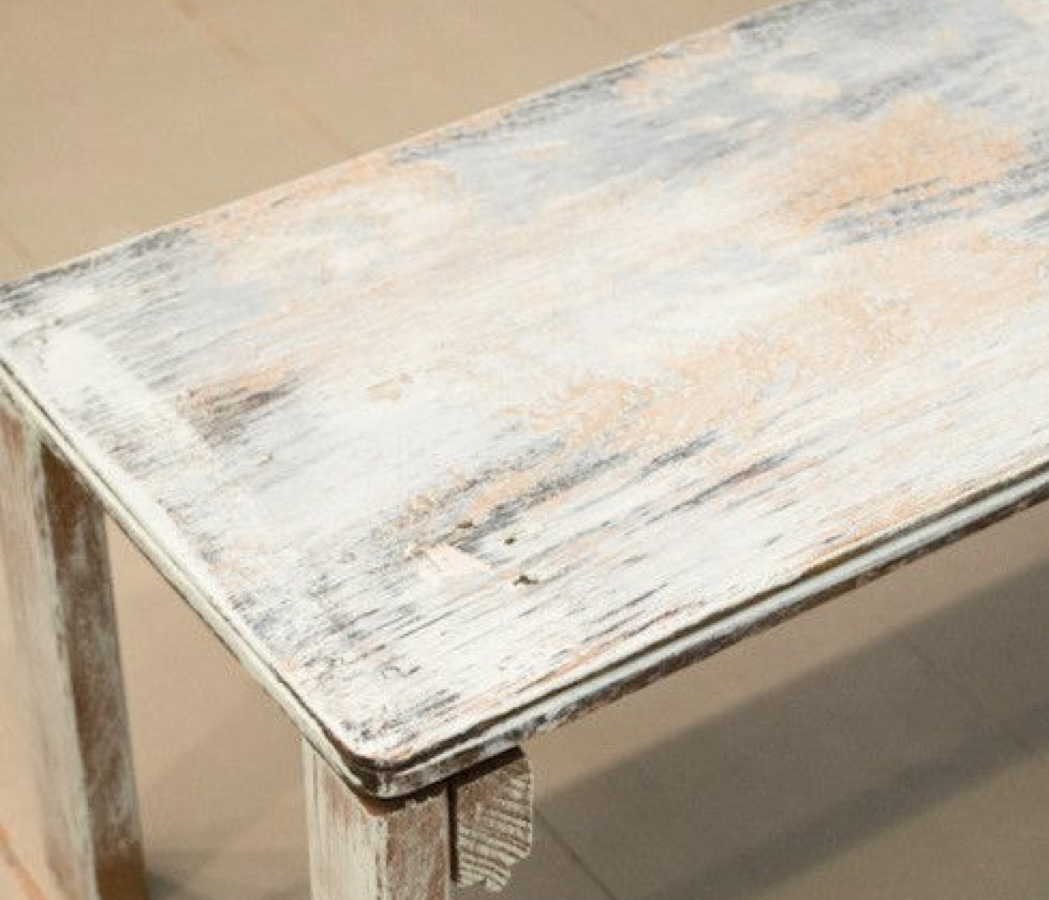
Decorative painting techniques
Some of the most used decorative painting techniques.
dry brush technique
The dry brush technique in painting is a technique in which a brush with very little paint on the bristles is used to apply dry and precise strokes on a surface. Instead of dipping the brush into the paint, the brush is rubbed gently on the paint palette to remove most of the paint, leaving only a small amount on the bristles.
with this technique, the artist can create a variety of effects, like textures and shadows, using the dry and precise strokes of the brush. This technique is commonly used in oil painting and watercolor., and can be especially effective for creating fine, delicate details in a work of art.
It is important to note that this technique requires practice and skill., as the artist must be able to control the amount of paint on the brush and apply it precisely to the work surface.
pickled
The decapé technique in painting is a decorative technique used to give an object or surface an aged or worn appearance.. The technique is based on applying several coats of paint and then lightly sanding or scraping some areas to reveal the bottom layer of paint or the natural wood under the paint..
Stripping can be done with a variety of paints, like water based paints or oil paints, and can be used on furniture, picture frames, doors, moldings and other decorative objects.
To achieve the decapé technique, a coat of primer is usually applied and allowed to dry completely. Then, a second coat of paint is applied in a different shade and allowed to partially dry. In this point, sanding or scraper tools can be used to gently remove some areas of the top coat of paint to reveal the undercoat or natural wood.
The final result of the decapé is a visually interesting effect, as it shows older and worn areas of paint, which creates a vintage and rustic look.
Fluffed
Sponge painting is a decorative technique used to create a textured effect on walls or other surfaces.. This technique is done by using a sponge to apply the paint to the surface instead of a brush or roller..
To do this technique, a base coat of paint is applied to the surface and allowed to dry completely. Then, a sponge is dipped into the paint of another color and the excess paint is removed by pressing it against a flat surface. Then, the sponge is gently pressed into the surface, creating a random, textured pattern.
The sponge technique can be done with a single sponge or with multiple sponges in different sizes and textures to create a more complex effect.. Multiple layers of paint can also be used to create an effect of depth and shadows..
This technique is especially popular for adding a decorative touch to interior walls and can be used on any type of paint., including water-based paints and oil paints.
crackled
The crackle painting technique is a decorative technique used to create an aged effect on painted surfaces.. Crackle simulates the look of old paint that has cracked and peeled over time. This technique can be applied to furniture, decorative objects, picture frames, among others.
To do the crackling, a base coat of paint is applied and allowed to dry completely. Then, a layer of crackling agent is applied over the base paint. Crackle agent is a chemical that dries faster than base coat paint, which causes cracks to occur on the paint surface.
Once the crackling agent has dried, a second coat of paint is applied on top of the crackled layer. The second coat will crack and flake in the areas where the cracking agent was applied.. This will create a cracking and splitting effect in the paint., creating the desired aging effect.
It is important to follow the manufacturer's instructions for the application of the cracking agent and paint to ensure that cracking occurs properly..
fabric effect
Cloth effect painting is a decorative technique used to create a textured effect on painted surfaces that mimics the look of cloth.. This technique can be applied on walls, ceilings, furniture, decorative objects and other elements.
To make the fabric effect, a base coat of paint is applied to the surface and allowed to dry completely. Then, a special tool is used, such as a textured roller or brush, to apply a second coat of paint in a different color. The tool is passed through the paint in a specific direction to create a pattern of lines that mimics the weave of fabric.
Once the second coat of paint has been applied, a tool such as a spatula or comb can be used to create a more complex texture pattern in the painting. This pattern can imitate different types of fabric, like silk, lino, cotton, among others.
The fabric effect is a very popular decorative technique because it can add a touch of elegance and sophistication to any space.. This technique can be done on any type of paint., including water-based paints and oil paints, and can be customized with different color and pattern combinations.
Rust effect
The rust paint technique is a decorative technique used to create a rust effect on painted surfaces., mimicking the look of rusty metal. This technique can be applied to furniture, decorative objects, walls, among others.
To make the rust effect, a base coat of paint is applied to the surface and allowed to dry completely. Then, a coat of metallic paint is applied in a color such as bronze or copper. After the metallic paint coat has dried, an oxidation solution is used to create rust stains on the surface.
Oxidation solution is a chemical that is applied with a brush or sponge to the desired areas. As the solution dries, creates an oxidation effect that looks like real rust.
